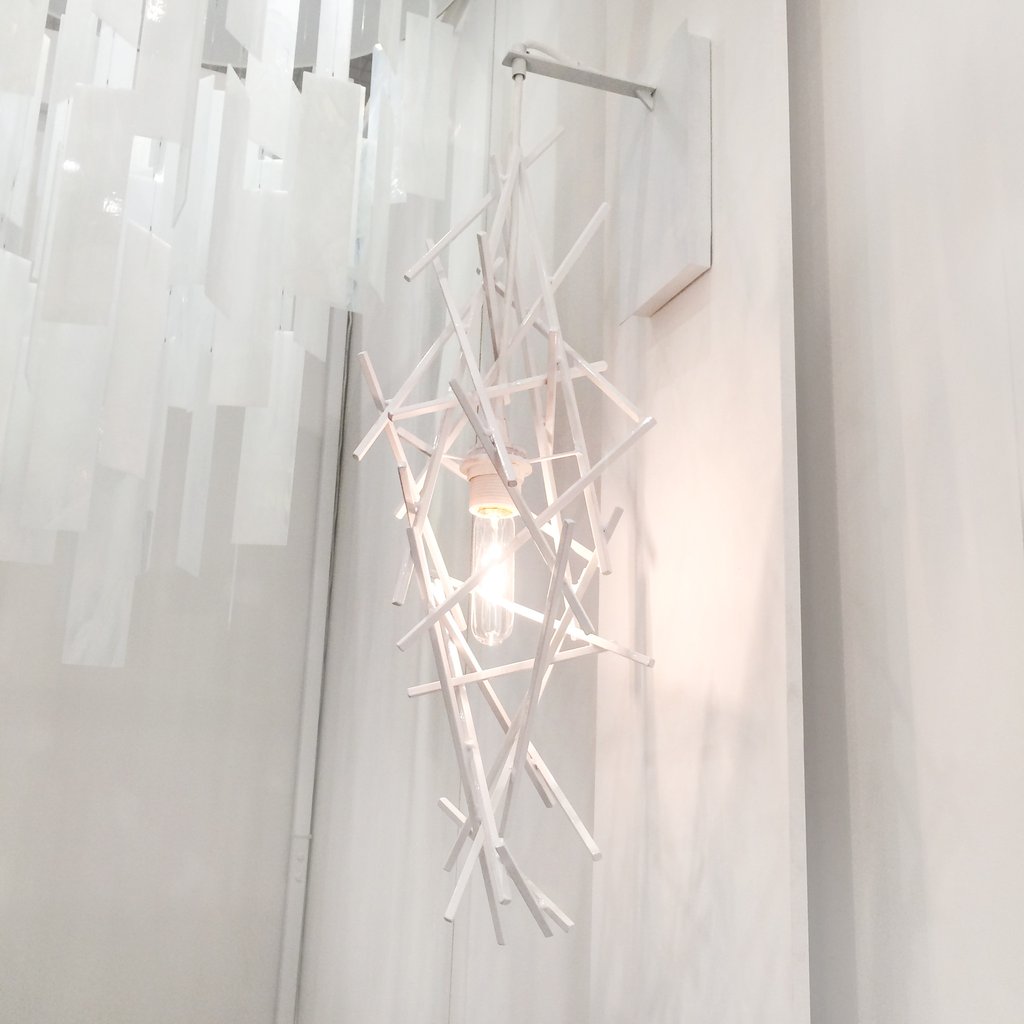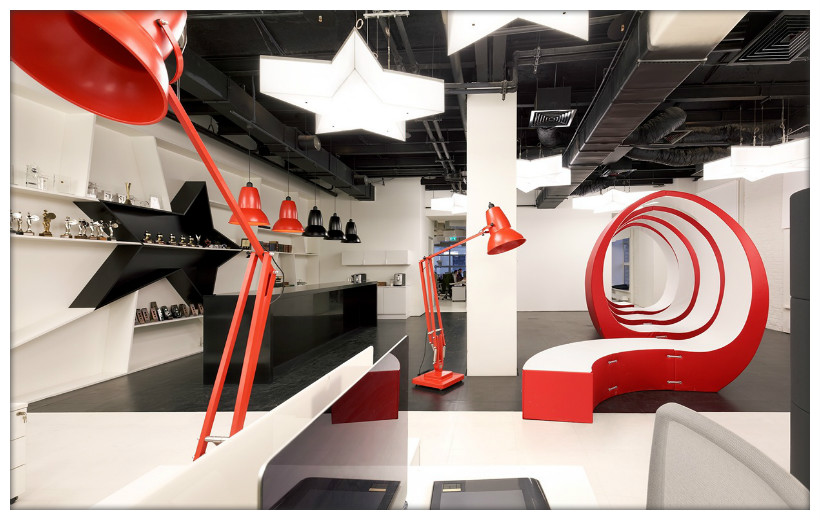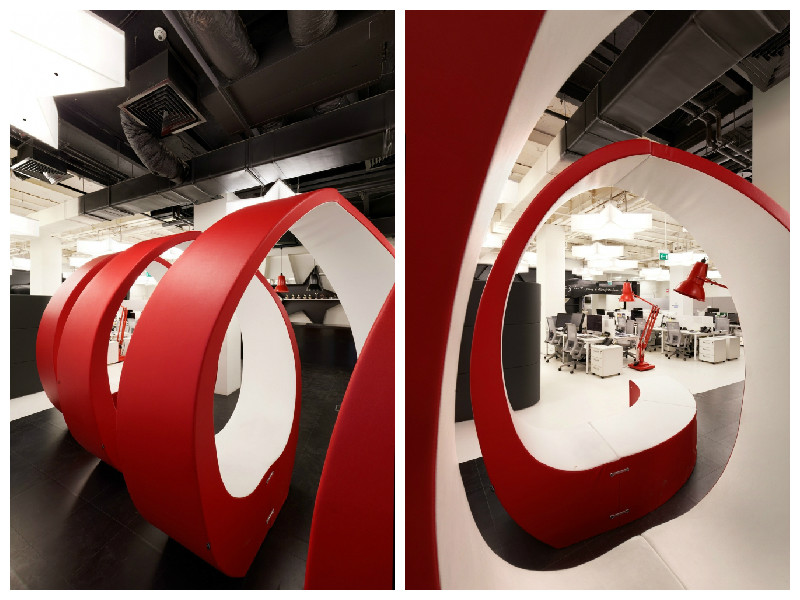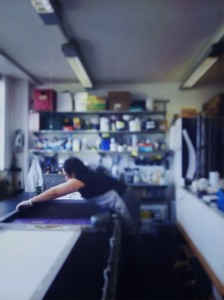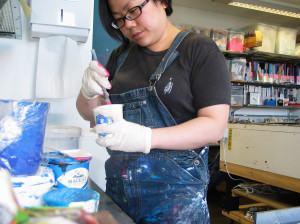As the night’s are drawing in, it seems a perfect time to focus on the work of some innovative lighting designers.
I was able to take a personal look at some of their work, and trends to look out for, at the ICFF contemporary design showcase event earlier this year.
This combination of walnut sits well with the unique excavation technique employed by New York based In.Sek. Designer Ashira Isreal adds quartz crystal to specially blended concrete, creating a torn window effect for the shade, which in turn casts a sprialing light and soft glow across any space.
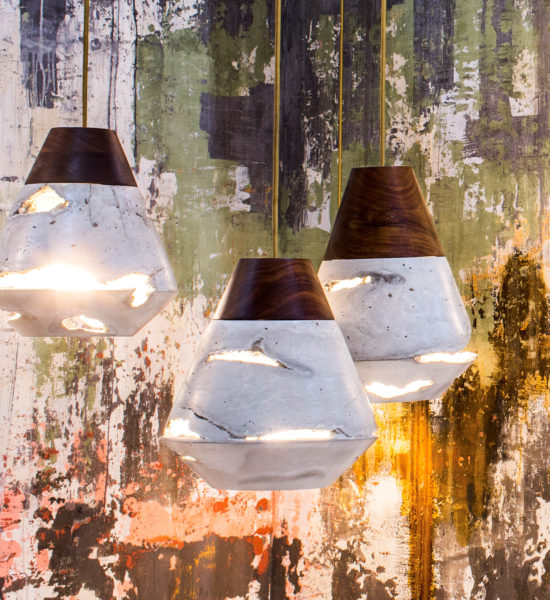
Created from painted stainless steel mesh, the apparent simplicity of these Arturo Alvarez designed lamps belies their delicate crafting. Fine pleats form two overlapped layers creating two different lamps full of dynamism – two lively shapes born from one, creating the same movement yet at a different tempo.
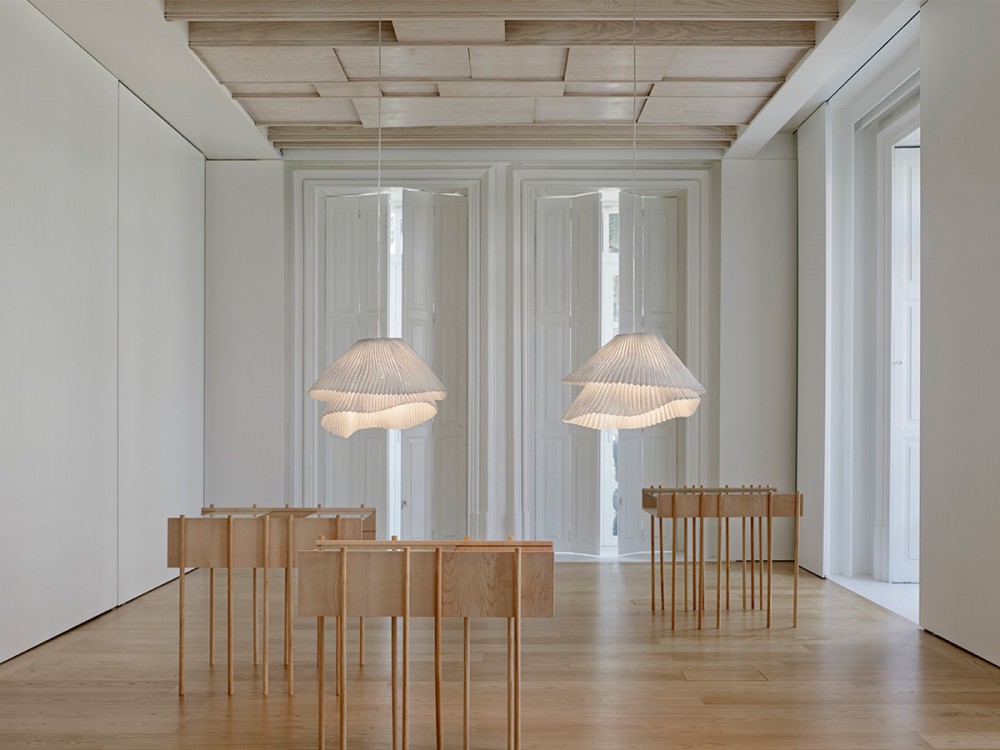
I particularly like how Iranian-born designer Ali Siavoshi works with everyday objects, transforming them into light fixtures, whilst injecting a sense of humour into these stylish and innovative displays.
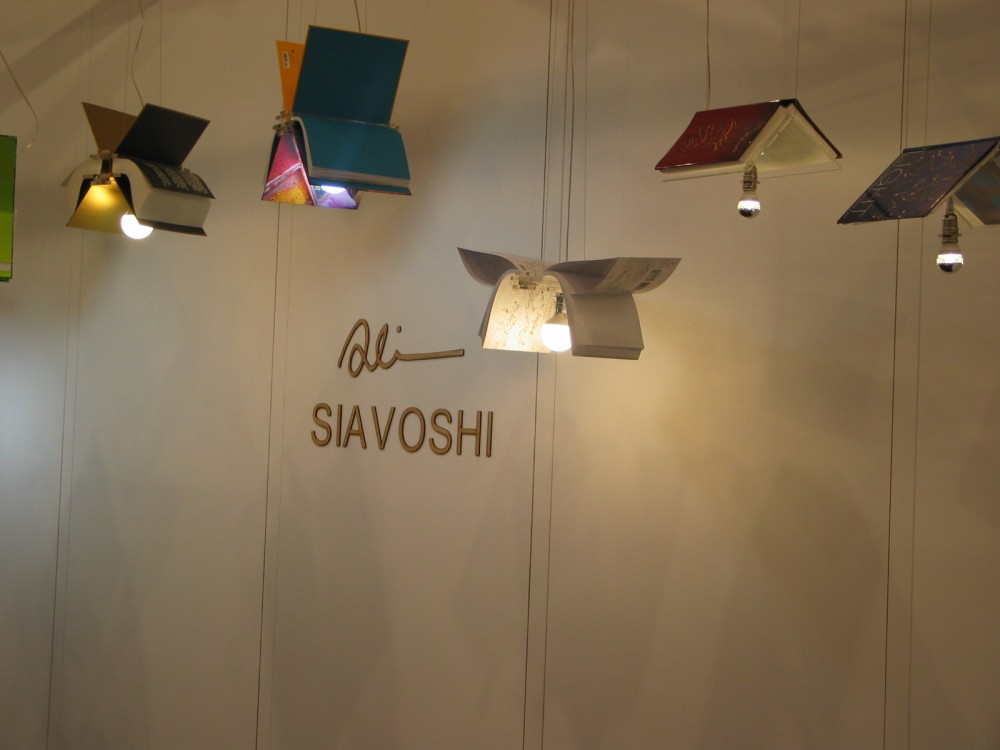
Another designer who creates extraordinary pieces of art and lighting from ordinary “up-cycled” everyday glass bottles, is Altanta based Kathleen Plate. Her innovative techniques and sophisticated designs sit well within contemporary and stylish restaurant and hotel groups.
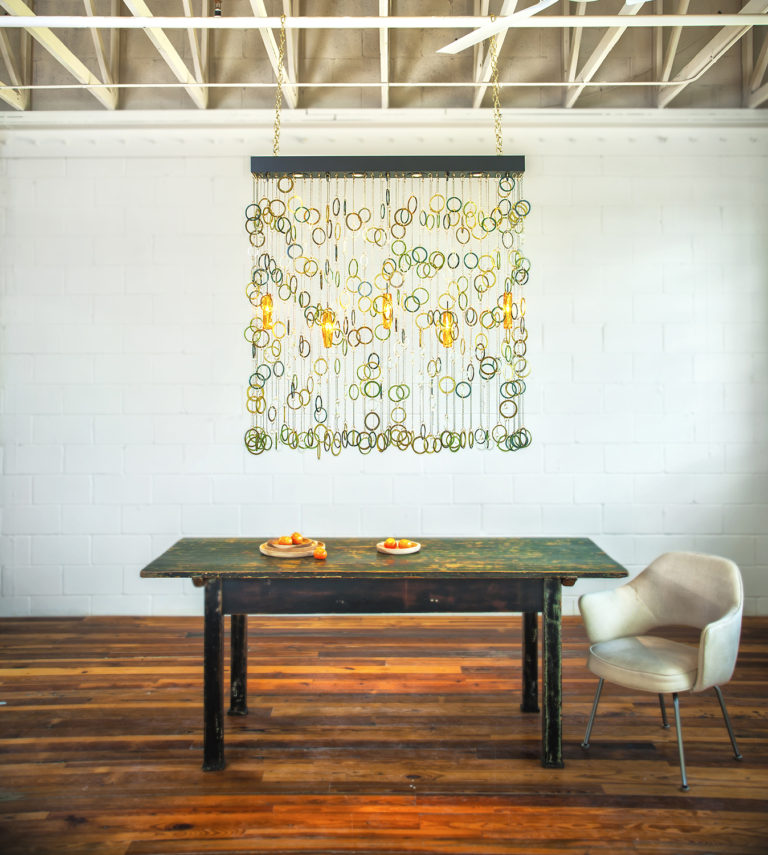
Zac Ridgely is a trained artist who uses his talent in the medium of light, son of a famed Canadian architect he quickly learned how to navigate his way through architectural drawings. The CRISS-CROSS series was created from a genuine desire to blend art with lighting, and this sculptural piece of cut steel rod is carefully arranged and welded in a seemingly random pattern.
Zac Ridgely’s Criss Cross wallsconce
I hope these inspirational creations will give you some ideas for transforming your living or working spaces.
Moody Monday offers a bespoke design service to complement any projects you might be considering, and I’d be happy to discuss these further, Eliza.
Sources: www.insekdesign.com
www.arturo-alvarez.com
www.alialiali.com
www.sdgconstructiontechnology.com
www.kathleenplate.com
www.ridgelystudioworks.com






